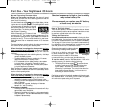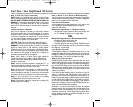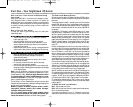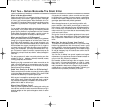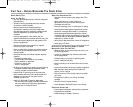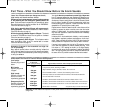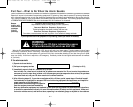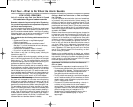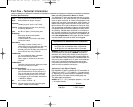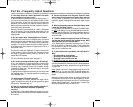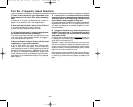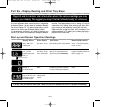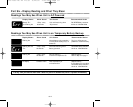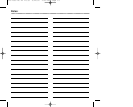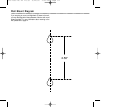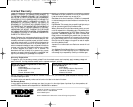
Part Five – Technical Information
How the Unit Determines When to Alarm
Your Nighthawk CO alarm uses advanced technology to monitor
the environment in your home and warn you of unacceptable
levels of carbon monoxide. An internal microcomputer works
together with the carbon monoxide sensor inside the alarm to
determine the levels of carbon monoxide in the air and to calcu-
late the rate that CO would be absorbed into the human body.
The microcomputer is calibrated to trigger the unit’s alarm before
most people would experience any symptoms of carbon monox-
ide poisoning. Because carbon monoxide is a cumulative poi-
son, long-term exposures to low levels can cause symptoms, as
well as short-term exposures to high levels. Your Nighthawk unit
has a time weighted alarm, so the higher the level of carbon
monoxide present, the sooner the alarm will be triggered.
This Nighthawk CO alarm meets the alarm response time
requirements of UL Standard 2034 which are as follows:
At 70 ppm, the unit must alarm within 60-240 minutes.
At 150 ppm, the unit must alarm within 10-50 minutes.
At 400 ppm, the unit must alarm within 4-15 minutes.
WARNING: This device may not alarm at low carbon monoxide lev-
els (see chart above for alarm points). WARNING: This product is
intended for use in ordinary indoor locations of family living units. It
is not designed to measure compliance with Occupational Safety and
Health Administration (OSHA) commercial or industrial standards. This
alarm has not been investigated by UL for carbon monoxide detection
below 70 ppm. Individuals with medical problems may consider
using warning devices which provide audible and visual signals for
carbon monoxide concentrations under 30 ppm.
Accuracy of the Digital Display
Each Nighthawk CO Alarm is calibrated at a CO concentration of
150 ppm in air, at 80˚ F (+/- 10˚ F) and 40% (+/- 3%) relative humid-
ity. Depending on the ambient condition (temperature, humidity)
and the condition of the sensor, the
alarm
readings may vary.
The digital reading tolerances are:
Ambient: 80˚ F (+/- 10˚ F), atmospheric pressure +/- 10%, 40%
+/- 3% relative humidity.
Tolerance
Reading (of displayed reading)
0-999 ppm +/-20% +15 ppm
Product Specifications
Power:
120V AC units: 60 Hz, Current 60 mA max.
Sensor:
Sensor calibrated at 150 ppm (±25 ppm).
Temperature:
Operating range: 40˚F (4.4˚C) to 100˚F (37.8˚C).
Mounting:
Accessories supplied for wall mount, direct plug
and table top applications.
Alarm:
85+ dB at 10’ @ 3.4 ± 0.5 KHz pulsing alarm.
LED Operation:
Blinking dot denotes normal operation.
Digital readout 30-999.
In alarm condition you will hear 4 quick beeps,
5 seconds off, repeat.
Battery Backup:
A 9V battery is needed. If battery is low or
missing while the unit is plugged into a 120V outlet,
an “Lb” message will display which will blink
alternately with a the CO reading every second and
the sounder will chirp every 15 seconds.
Unit Malfunction:
“Err” error message will display. Intermittent
alarm will sound every 30 seconds.
Refer to pages 1-6, 6-3 and 6-4 for other error
conditions.
Test/Reset Button:
Test button verifies proper unit operation and resets
the unit in the event of a CO alarm.
Peak Level Memory Button:
When pressed, LED will display the highest CO
ppm level detected since unit was powered up or
since unit was reset with test button. Reading will
be stored in memory as long as unit is not reset
or unplugged. Any CO concentration detected from
11-999 will be displayed
Size:
6”L x 3.75”W x 1.8”H. Wt. 1 lb.
Warranty:
Five-year warranty from date of purchase against
defects in material and workmanship.
5-1
810-1368 AC PP 12/99 8/24/00 2:06 PM Page 18



